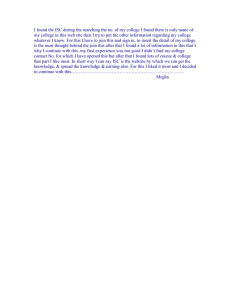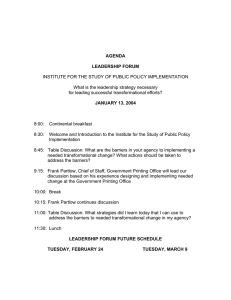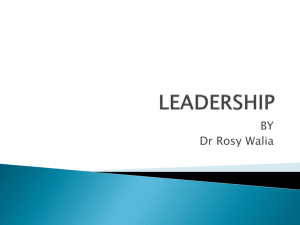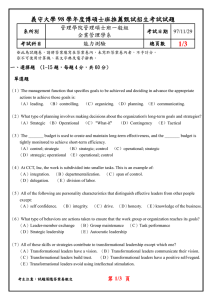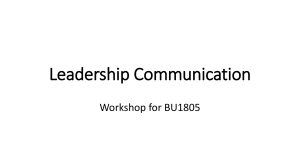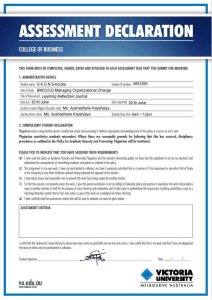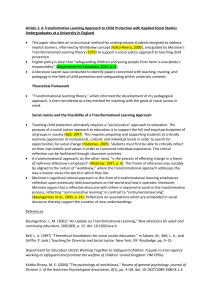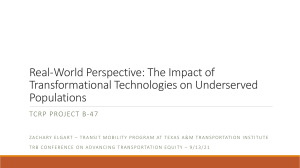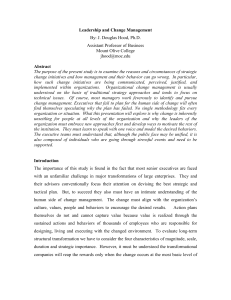Transformational Change in Organizations: A Presentation
advertisement
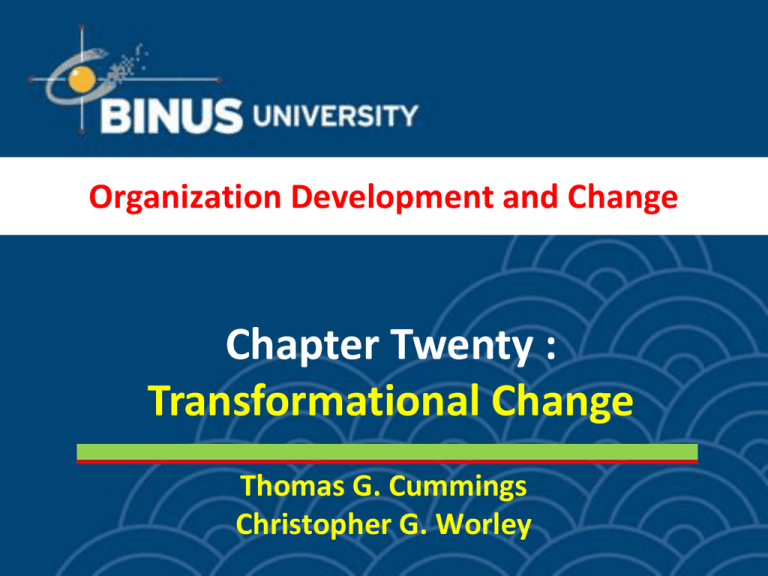
Organization Development and Change Chapter Twenty : Transformational Change Thomas G. Cummings Christopher G. Worley Learning Objectives for Chapter Twenty To explore a framework that categorizes different types of organizational change efforts with emphasis on the features of transformational change To understand three kinds of interventions against the background of transformational change, integrated strategic change, organization design, and culture change. 20-2 Characteristics of Transformational Change Triggered by Environmental and Internal Disruptions Aimed at Competitive Advantage Systemic and Revolutionary Change Demands a New Organizing Paradigm Driven by Senior Executives and Line Management Involves Significant Learning 20-3 Integrated Strategic Change (ISC) Integrated Strategic Change ……… is a deliberate coordinated process that leads to gradually or radically systemic realignments between the environment and a firm’s strategic orientation resulting in improvement in performance and effectiveness. 20-4 Integrated Strategic Change (ISC) ~ Key Features Strategic Orientation Creating the Strategic Plan Integrating Individuals and Groups into the Process HS 21-5 The Integrated Strategic Change Process Strategy S1 Strategic Change Plan Organization O1 Strategic Analysis Strategy S2 Organization Implementation O2 Strategic Choice 20-6 ISC Application Stages Strategic Analysis Assess the readiness for change and top management’s ability to carry out change Diagnose the Current Strategic Orientation Strategic Choice Top management determines the content of the strategic change Designing the Strategic Change Plan Development of a comprehensive agenda to achieve the change Implementing the Strategic Change Plan 20-7 Organizational Design Conceptual Framework Strategy Structure Work Design Human Resources Practices Management and Information Systems Key Point Fit, Congruence, Alignment among Organizational Elements 20-8 Organization Design Model Organization Strategy Strategic Fit Organization Design Management and Information Systems Structure Design Fit Human Resource Practices Work Design 20-9 Organization Designs 20-10 Organization Design Application Stages Clarifying the Design Focus Create the overall framework, begins with examining strategy and objectives and determining organization capabilities needed Designing the Organization Results in an overall design for the organization, detailed designs for the components, and preliminary plans for how to implement Implementing the Design Puts the new structures, practices and systems into place, draws heavily leading and managing change methods 20-11 The Concept of Organization Culture Artifacts Norms Values Basic Assumptions 20-12 Diagnosing Organization Culture Behavioral Approach Pattern of behaviors (artifacts) most related to performance Competing Values Approach Pattern of values emphasis characterizing the organization Deep Assumptions Approach Pattern of unexamined assumptions that solve internal integration and external adaptation problems well enough to be taught to others 20-13 Competing Values Approach Internal Focus & Integration Flexibility & Discretion Clan Adhocracy Hierarchy Market Stability & Control 20-14 Culture Change Application Stages Establish a clear strategic vision Get top-management commitment Model culture change at the highest level Modify the organization to support change Select and socialize newcomers; downsize deviants Develop ethical and legal sensitivity 20-15 2-16
